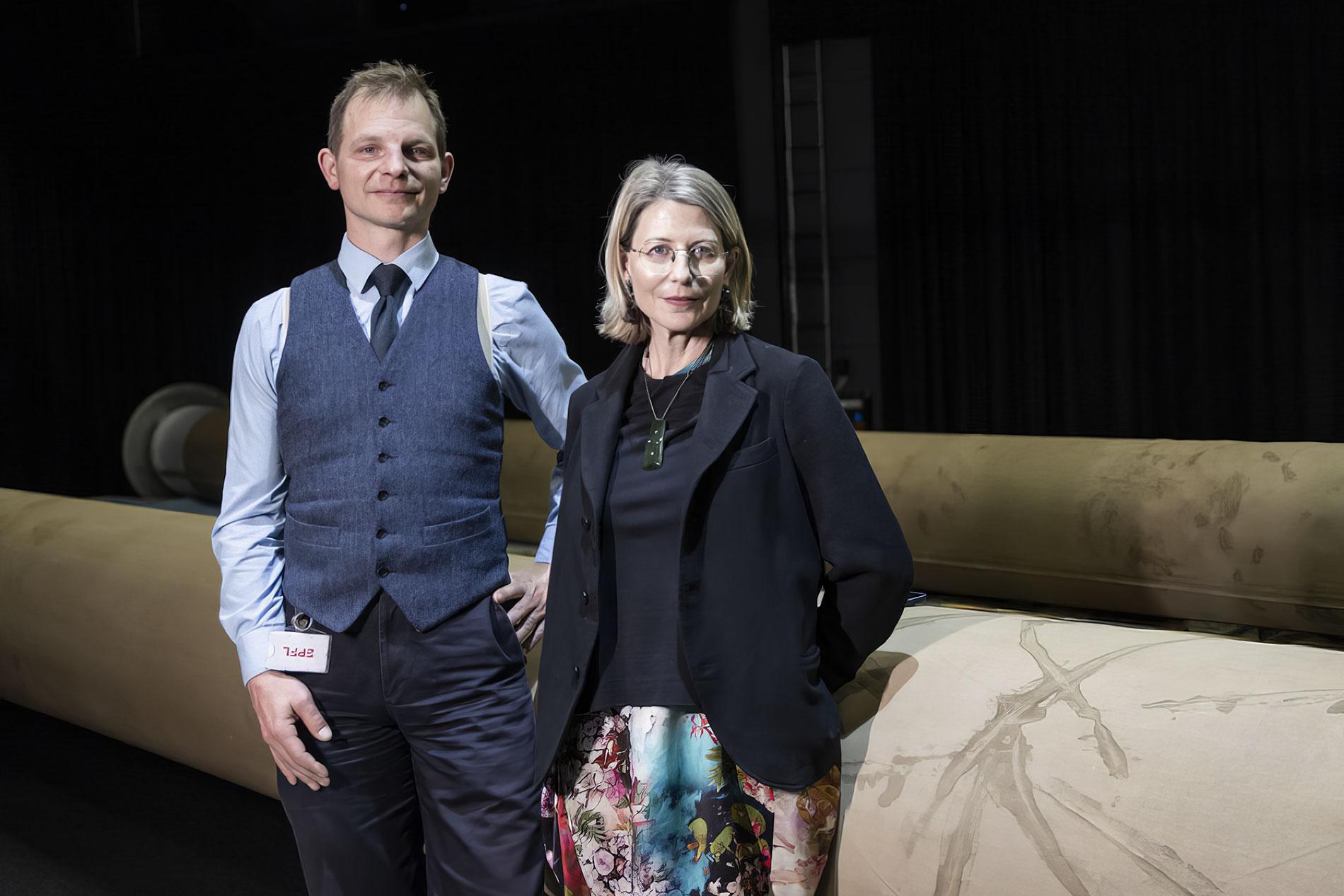The Panorama of the Battle of Murten as you've never seen it before

Immerse yourself in the digital twin of the Panorama of the Battle of Murten with sounds, smells and reconstructions: this is the premise of "The TeraPixel Panorama Project", which has been awarded the 2024 Optimus Agora Prize.
Switzerland is internationally renowned for its 19th-century painted panoramas. And so it seemed only natural to Sarah Kenderdine and Daniel Jaquet from EPFL who have been interested in these works for years to decide to focus on one in particular – the Panorama of the Battle of Murten (1893) – for their Agora project "The TeraPixel Panorama Project".
In 2023, the Laboratory for Experimental Museology (eM+) at EPFL retrieved the precious rolls containing the panorama from the military warehouse where they had lain untouched for more than 20 years. After conservation work, the artwork was digitised. Given the work's monumental size (1000 m2), this process required several months, making it the largest digital image of a single object ever made.
Sarah Kenderdine and Daniel Jaquet will now enhance the panorama's digital twin and present it to the public at various venues across Switzerland in 2025 and 2026. For their project, the two researchers have won the SNSF 2024 Optimus Agora Prize. We spoke with the two winners.
Why did you choose this particular panorama for your project?
It was actually the panorama that chose us. It’s a real national treasure that has rarely been shown to the public since its creation. Displayed in Zurich and Geneva for a few years at the beginning of the 20th century, it then disappeared from public view until it was put on display at Expo.02 for six months. What's more, the battle that it depicts (the Swiss Confederates' defeat of the army of Charles the Bold, Duke of Burgundy and the most powerful prince in Europe at that time), had a major impact on the events of Swiss and European history.
What advantages does the digital twin offer compared with the original panorama?
The panorama will be projected onto an interactive 360° viewing system. In order for the public to feel immersed and learn more about this significant historical event, we decided to highlight certain elements of the panorama. In particular, we will carry out historical reenactments, for example with the Company of St. George that specialises in the period of the depicted battle. Around a dozen scenes will be reenacted, such as sword and halberd fights. The public will also be able to zoom in on various objects, such as medieval weapons and clothing, which can be found in Swiss museums.
Are you also going to include smells?
Yes. We took into account one of the main criticisms that the public had made of the original 19th-century panorama. They felt that an essential element was missing: the smells. Visitors will therefore wear a collar equipped with a real-time system and, depending on the scene in front of them, the collar will emit different smells from the battlefield, from blood and sweat to the odour of goats.
Your aim is to make this panorama permanently accessible to as wide an audience as possible. How do you intend to achieve this?
We will create a website so that the panorama can be viewed at any time as well as outside of Switzerland. There will also be a database featuring all kinds of information and annotations by specialists on this work. As the project has different levels of interpretation and is aimed at various audiences, we will also develop appropriate educational resources. In addition, several exhibitions are expected to be held in 2025 and 2026, including at the Museum für Gestaltung Zurich, Grandson Castle, the Museum of Murten (marking the battle's 550th anniversary) and the Bern Historical Museum. The definitive programme will be announced in November.
In the 19th century, panoramas were a very popular means of communication and were susceptible to manipulation, particularly for political purposes. Which elements of the artwork do not faithfully represent this battle?
The Panorama of the Battle of Murten was painted in 1893, 417 years after the battle took place, to commemorate its 400th anniversary. The panorama is therefore not a reliable source for understanding the original battle. The painter Louis Braun drew his inspiration from a map of the battle invented by military historians. For instance, certain flags portrayed in the panorama did not actually exist at that time. The artist also romanticised the battlefield. There is very little blood to be found on the canvas, and we can also see ladies of the court parading with musicians on horseback.